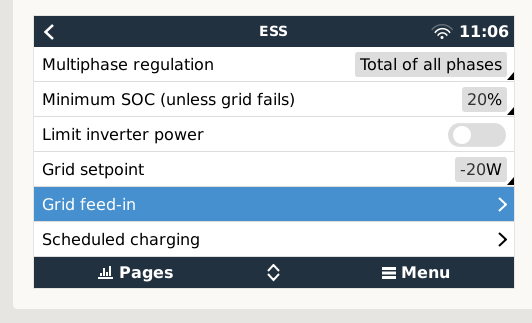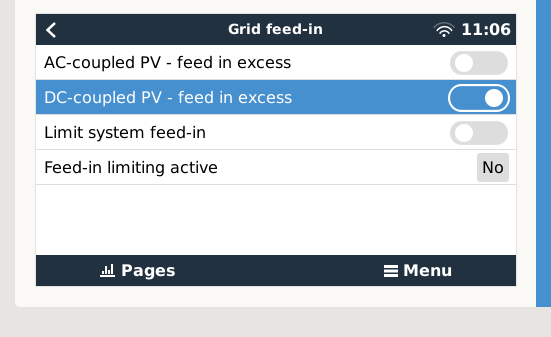Setup:
- 2x Pylontech US2000C (max Charge current = 50A)
- 1x MP2-3000
- 1x 1500w inverter (Growatt 1500) on AC-IN (connected to grid)
- DVCC Configured (max charge current 50A)
As soon as i activate "Feed-in-Excess" the charge current of DVCC is completly ignored and over 50A are sent to the battery. Even worse: When the battery is full, the loading continues..
How can I configure Feed-in-Excess correcly?
Screenshot 1: Max. current is ignored

Screenshot 2: Settings ESS


Thanks a lot for any help,
Timo
